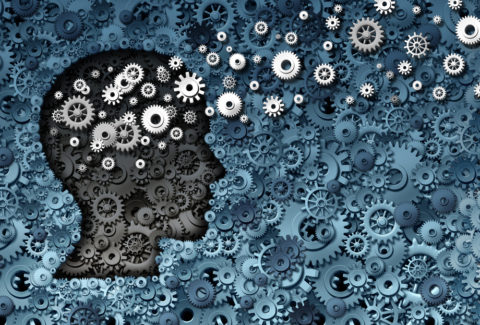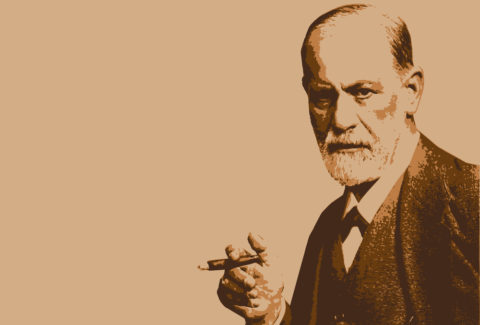Blocks

Blocks
A block is like a barrier, an obstacle, a stop, and a jam. It’s also like a blockage, and hindrance, an interference, a barricade, and a bar. And it also is like a burden, a defect, a deficiency, and a flaw.[1]
Depending on how you look at it, a block is also like a handicap, a hardship, a liability, a lack, and an inconvenience. It is like a minus, a nuisance, an objection, a privation, and a problem. And it Is like a weakness, a weak point, a snag, and an impediment.[1]
We have blocks. Blocks are exactly what get in the way of us being who we truly are, living as we truly wish, and doing what we truly want to do. The blocks are not necessarily the same for all of us; they are not necessarily of the same intensity for all of us, and they, therefore, do not have the same effect on all of us. This explains why we all are not at the same level of awareness and why we do not get the same results in our lives. However, one thing for sure is that our blocks limit us. They come from a complex mechanism. They get reinforced through how we relate to everything in life.
Now that we have operationalized what a block is, that we all have them, and the impact those blocks have on our lives, let us proceed with the following questions:
- Where do our blocks come from?
- How have we been reinforcing these blocks?
- How do we go about removing our blocks?
Where do our blocks come from?:
- Our thought system that is based on our Normal Blueprint, which, in turn, is based on inherited information stored in our genes, the environment we were in, and the experiences we had. That thought system is also based on our process of socialization, our process of internalization, and our process of reinforcement.
- Our belief system that is part of our thought system but, which our mind uses as part of our Normal Blueprint. Such a belief system, in turn, derives from a series of chronic thoughts, that we’ve been practicing either consciously or unconsciously, and that have become automatic, reflexive, and are on autopilot
- Our relationship with our thoughts, with our feelings, with our behaviors, with our habits, our results, and with our identity
- Our relationship with ourselves, with others, with things,
- Our relationship with our word
We have accumulated our blocks through a rather complex process – a process that involves the combined mechanism of genetics, epigenetics, the process of socialization, and a process of internalization.
- Genetics: As complex as a discussion about genetics may sound, the little we need to understand is rather straightforward: Our genes contain memories[2]. This is information that we have inherited from our parents, that our parents inherited from their parents, and that their parents inherited from our great-grandparents, and so on. That genetic information, that memory, is present in our physical structure and can be active, or inactive, expressed, or unexpressed, all of which will depend on the other factors that are part of the combined mechanism (epigenetics, the process of socialization, and the process of internalization).
- Epigenetics[3]: is the process of gene activation and of gene expression, using the means of the interaction between genes and environment. By environment, we mean anything that is not genetic. This means our experiences, our process of socialization, of internalization, and anything in our surrounding is considered environment, and substance for the process of epigenetics
- The third factor in this combined mechanism is, the Environment, which is broken down into the process of socialization, the process of internalization, and environmental factors, independent of socialization or internalization.
Let’s take a closer look:
The process of socialization takes place through three major mechanisms: Classical Conditioning; Operant Conditioning; and Social Modeling.
In a nutshell:
- Classical conditioning[4] is about associations. We’ve been conditioned to associate things. We have learned to associate things, even when they might have no contextual association, and eventually, we do this automatically, without even thinking about it, or without even knowing that we are.
- Operant conditioning[5] is about reinforcement. Things happen, something else follows, we like what ensues, and we want more of it, and want to repeat it. All this reinforces things for us, in our brain, in our mind, and it happens almost always without much thinking about it – outside our awareness
- Social modeling[6] is the third major mechanism of socialization. We perceive things, we repeat them, we mimic them, we emulate them. The more meaning something has for us, the more we are likely to imitate it. The more someone means something to us the more we are likely to emulate him or her.
Now, how does all this lead to blocks? The short answer is because our thought system that is not rooted in Reality. This combined mechanism – genetics, epigenetics, and environment – is based on a thought system that follows an Ordinary Blueprint. And it is based on a thought system that is filled with constructs that have been created with an Ordinary Blueprint, to start with.
How have we been reinforcing these blocks?
All this, in turn, has been reinforced, by us, through our relationship with our belief system, our thoughts, feelings, and behaviors. We also reinforce this Ordinary Blueprint through our relationship with things in our environment, and through our relationship with different functions of our body. Our relationship with our breath and our relationship with the sensations of our body are two of these types of relationships that are very significant because they are controlled directly by our unconscious mind, they mimic the patterns of the unconscious mind, and any relationship with them is a relationship with our unconscious mind. This takes us to the last question to answer in this article:
How do we go about removing our blocks?
And the short answer is:
- By putting an end to pattern reinforcement. And for us to do this, we ought to know, when we are reinforcing, how we are reinforcing, and how to stop reinforcing
- By allowing these blocks to die and self-eradicate
- By permitting the Natural Blueprint to be expressed in you, as you, and through you. And for this to take place, the blocks are no longer being reinforced; a level of awareness is required, and that level of awareness can be achieved through a series of unconscious- and conscious-based interventions.
We have been using a number of conscious- and unconscious-based interventions throughout our New Psychotherapy Certificate Course. Based on how regular, how frequent, and how intense the practice of these interventions has been, one must have by now experienced their efficacy.
The time has come where the application of the latest in science is no longer to make the most amount of money but to help the highest number of people end their own suffering.
The SWEET Institute is aware of the following:
- When people have what it takes to end their own suffering, they become less dependent on others, on the system, and that can be threatening to many – to the system
- As such, many people, or the system, do not wish people to know, or to have what it takes, to be autonomous, or to be on their own. That might cause a huge collapse of a system that has been set up to keep as many people as possible dependent on them, so they continue to profit from them
- No system whose existence is dependent on keeping others dependent and disempowered can last forever
- Instead of fighting such a system, we are introducing a new one that will make this one obsolete.
- We know there will be resistance. But we know that nothing can resist Reality. Reality always prevails.
It is time for so many people to end their suffering. It is time for so many people to stop living a disempowered life. And it is time for so many people to start living a fulfilling life, a life of satisfaction, and a life of self-actualization. When this takes place, it will become clear that everyone will win. When that happens, it will become clear that no one has to lose in order for another gain. When that happens, we will truly realize that we are all one and together we can fully participate in the ongoing process of the evolution of life.
We’ll see you there!
[1] Merriam-Webster. (n.d.). Block definition & meaning. Merriam-Webster. Retrieved July 7, 2022, from https://www.merriam-webster.com/dictionary/block
1 Merriam-Webster. (n.d.). Block definition & meaning. Merriam-Webster. Retrieved July 7, 2022, from https://www.merriam-webster.com/dictionary/block
[2] Treffert, D. (2015, January 28). Genetic memory: How we know things we never learned. Scientific American Blog Network. Retrieved July 7, 2022, from https://blogs.scientificamerican.com/guest-blog/genetic-memory-how-we-know-things-we-never-learned/
[3] Centers for Disease Control and Prevention. (2022, May 18). What is epigenetics? Centers for Disease Control and Prevention. Retrieved July 7, 2022, from https://www.cdc.gov/genomics/disease/epigenetics.htm#:~:text=Epigenetics%20is%20the%20study%20of,body%20reads%20a%20DNA%20sequence.
[4] Rehman I, Mahabadi N, Sanvictores T, et al. Classical Conditioning. [Updated 2021 Aug 27]. In: StatPearls [Internet]. Treasure Island (FL): StatPearls Publishing; 2022 Jan-. Available from: https://www.ncbi.nlm.nih.gov/books/NBK470326/
[5] Staddon JE, Cerutti DT. Operant conditioning. Annu Rev Psychol. 2003;54:115-44. doi: 10.1146/annurev.psych.54.101601.145124. Epub 2002 Jun 10. PMID: 12415075; PMCID: PMC1473025.
[6] Marvin ML. Social Modeling: A Psychological-Theological Perspective. Journal of Psychology and Theology. 1980;8(3):211-221. doi:10.1177/009164718000800307








